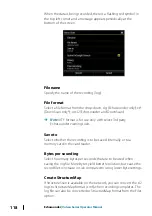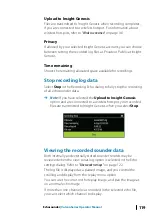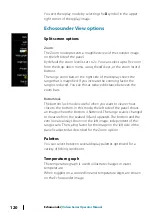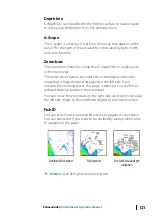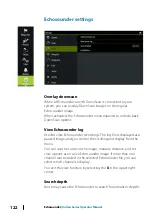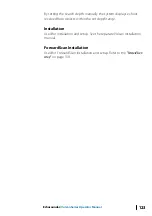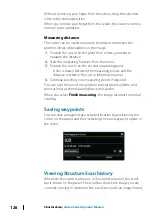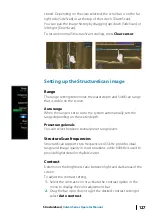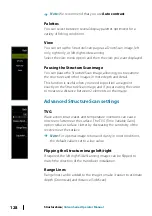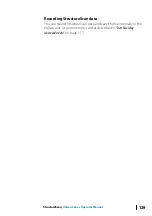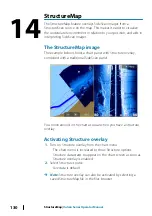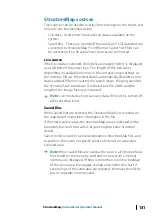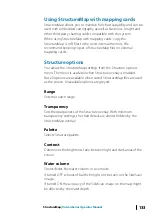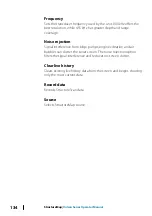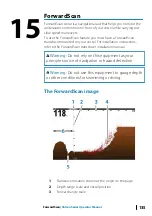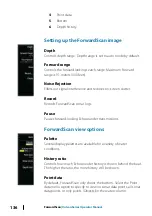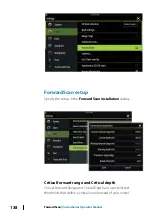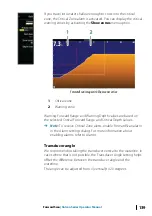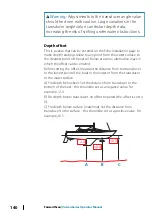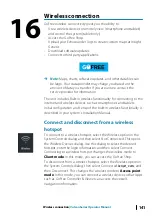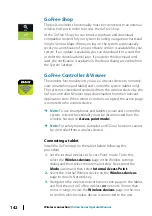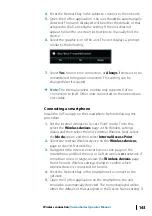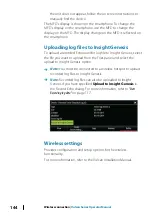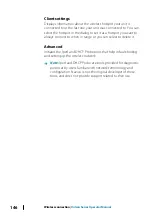
StructureMap tips
•
To get a picture of taller structures (a wreck, etc.) — do not drive
over it, instead, steer the boat so the structure is on the left or
right side of your vessel.
•
Do not use Autorange when using StructureScan. Set your
structure range to a significantly greater level (two-to-three
times) than the water depth to ensure a complete scan and to
maximize conversion accuracy.
•
Do not overlap history trails when conducting a side-by-side scan
of an area.
Recording StructureScan data
StructureScan data can be recorded from a chart panel with
Structure overlay enabled.
StructureScan recordings can also be started from a StructureScan
panel.
When StructureScan data is being recorded, there is a flashing red
symbol and a message appears periodically at the bottom of the
screen.
Ú
Note:
The message includes information about file size. Keep
the size of your logs to 100MB or less to allow for faster file
conversion.
The recording is stopped by re-selecting the record function.
Converting StructureScan data to StructureMap format
A StructureScan log file (.sl2) is converted to StructureMap format
(.smf ) after recording from the recording dialog, or from the files
browser.
You can create standard or high resolution files. High resolution .smf
files capture more detail, but take longer to convert and are larger
than standard resolution files.
To save disc space it is recommended to remove the StructureScan
(.sl2) files after conversion.
132
StructureMap
| Vulcan Series Operator Manual
Summary of Contents for Vulcan Series
Page 1: ...ENGLISH VulcanSeries Operator Manual www bandg com...
Page 2: ......
Page 8: ...8 Preface Vulcan Series Operator Manual...
Page 178: ...178 Alarms Vulcan Series Operator Manual...
Page 198: ...988 11111 002 0980...

